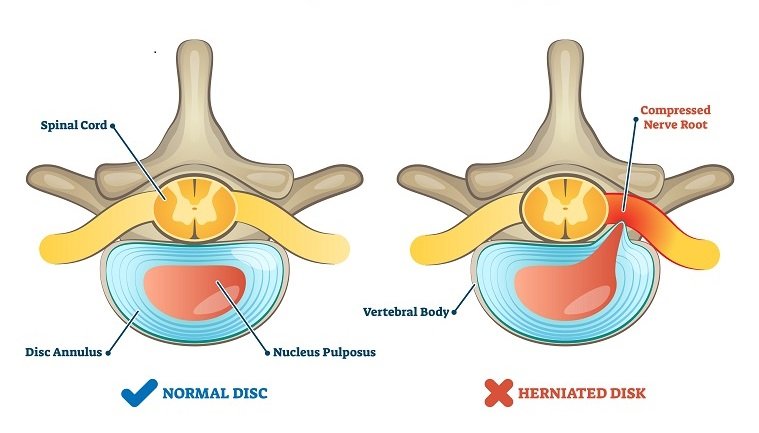
DISC BULGES
A disc bulge doesnt need to be a death sentence
What is a disc bulge?
Disc bulges are one of the dreaded labels for people with lower back or neck pain, and are known by many names - slipped discs, disc herniations, disc protusions and the classic “threw my back out”. A “disc bulge” refers to a wide variety of injuries which can occur to the discs between the bony parts of the spine. The outer layer of spinal discs is made of dense layered cartilage, with the middle portion containing a thick gel-like substance known as the nucleus. With certain kinds of disc injuries, the outer layer can deform and bulge out beyond the borders of the bony vertebral body, and in more serious cases the inner gel can begin to leak out of the center and irritate the nerve and soft tissue structures around the spine.
What causes disc bulges?
Disc bulges can arise from sudden compressive injuries to the spine, such as from lifting a heavy load, or even a relatively light load with poor technique. They can also be the result of repetitive actions and activities which place strain on the discs, be they from a factory worker or working at a desk for long hours.
Do I need X-rays or an MRI?
In most cases, no. Risk factors for potential medical emergencies can be readily identified from a thorough physical examination, and in the majority of cases we can begin treatment on the same day without imaging. Even in cases where imaging is necessary (and it sometimes is), there is often something we can do to safely ease pain and symptoms whilst an MRI is organised.
This is good news - it means you can avoid paying for unnecessary services and start treatment earlier!
What are the symptoms of disc bulges?
Symptoms will vary depending on the location of the injured disc and the extent of the injury. They are most common in the lower back but can also occur in the neck and middle back, and generally have a common pattern which makes them easy to recognise:
Local pain around the area of the injured disc, be it in the neck or lower back.
Numbness, tingling and/or burning sensations through the areas supplied by the nerve/s near that region, commonly felt in the arms or the legs (such as Sciatica)
Weakness of the surrounding muscles
Ok I have a disc bulge, so what now?
If you’ve been diagnosed with a disc bulge (or worry you might have one) then the first step is to get a thorough examination so that we can determine the extent of the injury and how to best treat it. In many cases an MRI or CT scan may be ordered to make sure any bulge isn’t compromising the delicate spinal cord or nerve structures near the injured disc.
Patients are often concerned that a disc bulge is a life sentence for pain and discomfort, however the reality is actually much more optimistic - one study found that up to 80% of patients report feeling “excellent” or “good” following conservative (non-surgical) treatment for lower back disc injuries.






